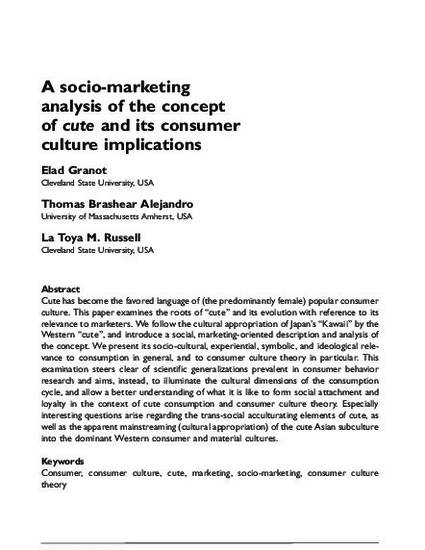
- culture; social marketing; consumer behavior
Cute has become the favored language of (the predominantly female) popular consumer culture. This paper examines the roots of “cute” and its evolution with reference to its relevance to marketers. We follow the cultural appropriation of Japan’s “Kawaii” by the Western “cute”, and introduce a social, marketing-oriented description and analysis of the concept. We present its socio-cultural, experiential, symbolic, and ideological relevance to consumption in general, and to consumer culture theory in particular. This examination steers clear of scientific generalizations prevalent in consumer behavior research and aims, instead, to illuminate the cultural dimensions of the consumption cycle, and allow a better understanding of what it is like to form social attachment and loyalty in the context of cute consumption and consumer culture theory. Especially interesting questions arise regarding the trans-social acculturating elements of cute, as well as the apparent mainstreaming (cultural appropriation) of the cute Asian subculture into the dominant Western consumer and material cultures.
